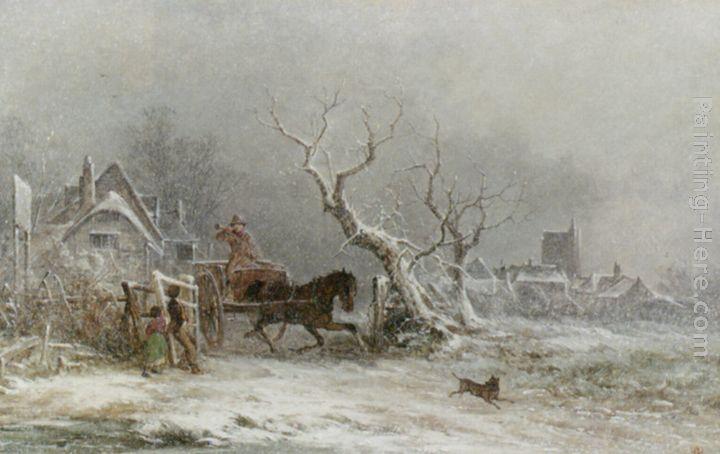For those of you in the Northeast who are being battered by the monster snow-storm, here’s a well-known Ralph Waldo Emerson poem to help you appreciate it aesthetically. In Emerson’s vision, the snow-storm is a powerful artist who turns his back on conventional rules (“naught cares he for number or proportion”) and extravagantly follows his own genius. As a result, suddenly coops and kennels are hung with “Parian wreaths” (Parian marble is the pure white marble favored by the ancient Greeks), and a “swan-like form invests the hidden thorn.”
In a past post on Frost’s “Stopping by Woods,” I have noted that a snow day is “found time,” providing us an opportunity to break with normal work or school routines and see the world with new eyes. Emerson’s poem urges us to do the same. The snow forces the traveler, the courier, and the farmer to stop what they are doing, and they can take advantage of this opportunity (“Come see”) to witness this great artist at work.
The artist is humble as well. When the sun returns, he will retire “as he were not.” But the art world will remember and seek, through laborious effort, to imitate the architecture that this mad artist threw up in a night, as though in a frolic.
A masterpiece is being created outside your window, so stop and appreciate it. Then go back to your radiant fireplace.
The Snow-Storm
Ralph Waldo Emerson
Announced by all the trumpets of the sky,
Arrives the snow, and, driving o’er the fields,
Seems nowhere to alight: the whited air
Hides hills and woods, the river, and the heaven,
And veils the farm-house at the garden’s end.
The sled and traveller stopped, the courier’s feet
Delayed, all friends shut out, the housemates sit
Around the radiant fireplace, enclosed
In a tumultuous privacy of storm.
Come see the north wind’s masonry.
Out of an unseen quarry evermore
Furnished with tile, the fierce artificer
Curves his white bastions with projected roof
Round every windward stake, or tree, or door.
Speeding, the myriad-handed, his wild work
So fanciful, so savage, nought cares he
For number or proportion. Mockingly,
On coop or kennel he hangs Parian wreaths;
A swan-like form invests the hidden thorn;
Fills up the farmer’s lane from wall to wall,
Maugre the farmer’s sighs; and, at the gate,
A tapering turret overtops the work.
And when his hours are numbered, and the world
Is all his own, retiring, as he were not,
Leaves, when the sun appears, astonished Art
To mimic in slow structures, stone by stone,
Built in an age, the mad wind’s night-work,
The frolic architecture of the snow.
Previous posts on snow
First Snowfall, a Moment of Grace
Move with the Wind, Sleep under the Snow
Snow Days Open Up Cracks in Time
Captain Nemo Invades New England
Midwinter Transformation: A Poem


